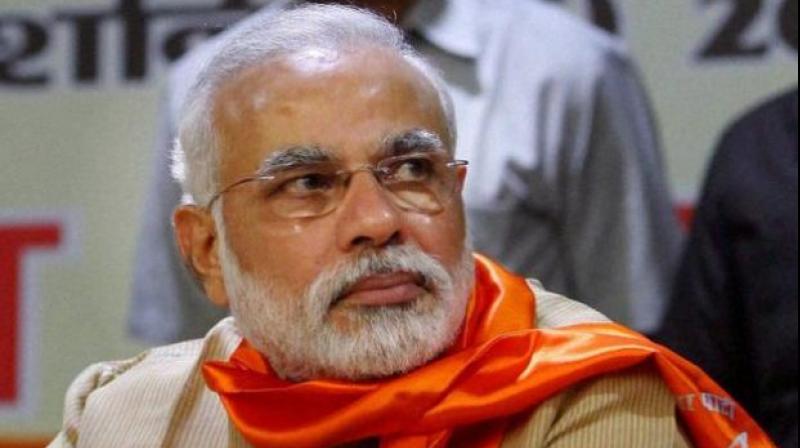Wide Angle: India's best governed state is not Gujarat

It is axiomatic as night follows the day, that wherever the Congress recedes, the terrain will most often be occupied by the BJP. This precisely is what is about to happen in that unique haven of stability in the Northeast — Tripura. The Communist Party of India (Marxist) has been in power for 32 years with 50 per cent of the vote, but the Congress’ voteshare has not been negligible: 36 per cent which the BJP will now eye. When Mamata Banerjee went about demolishing the CPM and the Congress in West Bengal, the infection reached Tripura too. President of the Congress in Tripura, Sudip Roy Barman, his eye on the main chance, switched to the Trinamul Congress. If Mr Barman can switch loyalties once for advantage, what prevents him from doing it again — this time for greater advantage? Agartala is rife with rumours that Mr Barman, with five of his partymen, is about to join the BJP, which, so far, has not had a solitary BJP member. This development will be welcomed by governor Tathagata Roy whose outbursts against Muslims leaves even BJP cadres in neighbouring West Bengal dumbfounded. The governor believes that Muslims can only be “properly integrated” if they start eating pork in public. Images associated with swine is something of an obsession with him. For instance, his preferred punishment for Muslim terrorists, takes one’s breath away: “Wrap them in pigskin and bury them face down in pig’s excreta.”
CPM chief minister Manik Sarkar, who has been in the saddle without a break for 17 years, will not be unsettled by this kind of diatribe, but there is a seven per cent Muslim population which can react. Because of zero media interest in what in my experience is the country’s best governed state, the rest of the country remains ignorant about it. It must be said, to the credit of Union law minister Ravi Shankar Prasad, that he once described Mr Sarkar as a chief minister he admires. At about the same time, Andrew Buncombe, who was then the India correspondent of London’s Independent in New Delhi, returned from Agartala filled with admiration. “An orderly, neat, clean state with no-nonsense administration.” Most visitors notice it and so did he: “The chief minister sometimes walks to office.” I have myself been witness to the chief minister’s wife, a school teacher, taking a cycle rickshaw to work. Has anyone taken note of Tripura’s human development index? True, its population is small — 40 lakh. Only Goa and Sikkim have smaller populations. Even so, its 96 per cent literacy rate ranks as the highest. Literacy rate in Gujarat is 83 per cent. (I am leaving out Kerala from this competition because it was once uniquely superior.)
Life expectancy of 71 years for men and 73 for women too is a record. In Gujarat, it is 64 and 66. Tripura’s Bengali population blots the copy somewhat but gender bias among tribals is the lowest. Even so, the average is 961 as against 918 in Gujarat. The great genius the leadership has demonstrated is in grasping an essential truth — like politics, good governance too is essentially the art of the possible. Instead of beating its breast and flailing its arms, the regime picked up all the Central and state schemes, put its head down, called in the officials, party cadres, involved the three-tier panchayati raj system and gave a sense of real participation to the elected autonomous district councils which cover two-thirds of the state and all the tribal areas of Tripura. This should be grasped. The basic conflict in the state, one which exploded as the fiercest insurgency in the Northeast, was on the tribal-non tribal faultline. Under the Maharajas, who figure in mythology, Tripura was overwhelmingly tribal. But after the creation of East Pakistan (later Bangladesh), Hindu Bengalis from contiguous territories that were once managed by the Maharaja, migrated to Tripura. The tribals (a total of 19 tribes), became a minority in the state. The 70:30 ratio in favour of the tribals was exactly inverted. Today 70 per cent of the population is Bengali.
The Congress, born for power, fell back on the simple divide and rule strategy, pocketing the Bengali vote bank. Who says only the BJP practices polarisation politics? If ever there was a shortfall in numbers, there was always a tribe to be played against the other. A great tribal, communist leader Dasarath Deb had seen the future. He launched Jana Shiksha Abhiyan for education among tribals in 1945, forcing the Maharaja to recognise 500 primary schools, which mushroomed and today saturate the state — a school every kilometre. It was from this base that the tribals gravitated towards communism. Bengalis, meanwhile, turned to the Congress. The Congress was content with the sectarian divide. But a leader like Nripen Chakraborty accurately gauged the difficult social reality: without tribal support all Bengali agenda would be circumscribed. Likewise, tribals would not advance without Bengali help. The call went out — tribal-non tribal unity was the absolute imperative.
The idea flared up across the state for two reasons. Tribals, who had taken to communism in the ’40s and ’50s, grasped the idea instantly. In driblets, Bengalis too came into the fold. So, while the Left slowly expanded its platform of unity, the Congress persisted with its Bengali focus, not without some electoral gains. What keeps the electorate, indeed the population, persistently in the Left’s thrall is the universally accepted incorruptibility of the leadership. Congress MLA Gopal Roy shook his head in agreement — “personal incorruptibility cannot be denied”.
First Left Front chief minister Nripen Chakraborty (1978-88) entered the official bungalow and left it with the same two tin trunks — clothes, books and a shaving kit. Grocery purchases for the CM’s household were made on a ration card. Modern capitalism would probably consider him a pariah because he never had a bank account. His disciple, Mr Sarkar, is equally austere. Incredibly, the CM finds time to review all major Central and state schemes. He had completed an implementation review of the National Rural Employment Guarantee scheme when I met him in his spartan office, decorated with a Tagore photograph.
In efficient implementation of schemes, the state has no parallels. Clinics, schools, anganwadi, infant and mother care, electricity distribution and, above all, building roads that connect the remotest areas. All of this has created an atmosphere of general tranquility. The then director-general of police K. Nagaraj was quite stunned: “There is very little crime in the state — negligible.” This is a miracle in a state where people were afraid to leave their homes three years ago because of the insurgency. “Perfect coordination between the police and the politician is the only explanation.” Heaven knows what feedback Prime Minister Narendra Modi has on his Swachh Bharat or Clean India mission, but if he were to send his officers to some of the more remote parts of Tripura, they would rub their eyes with wonder at what has been achieved in such a short period.

